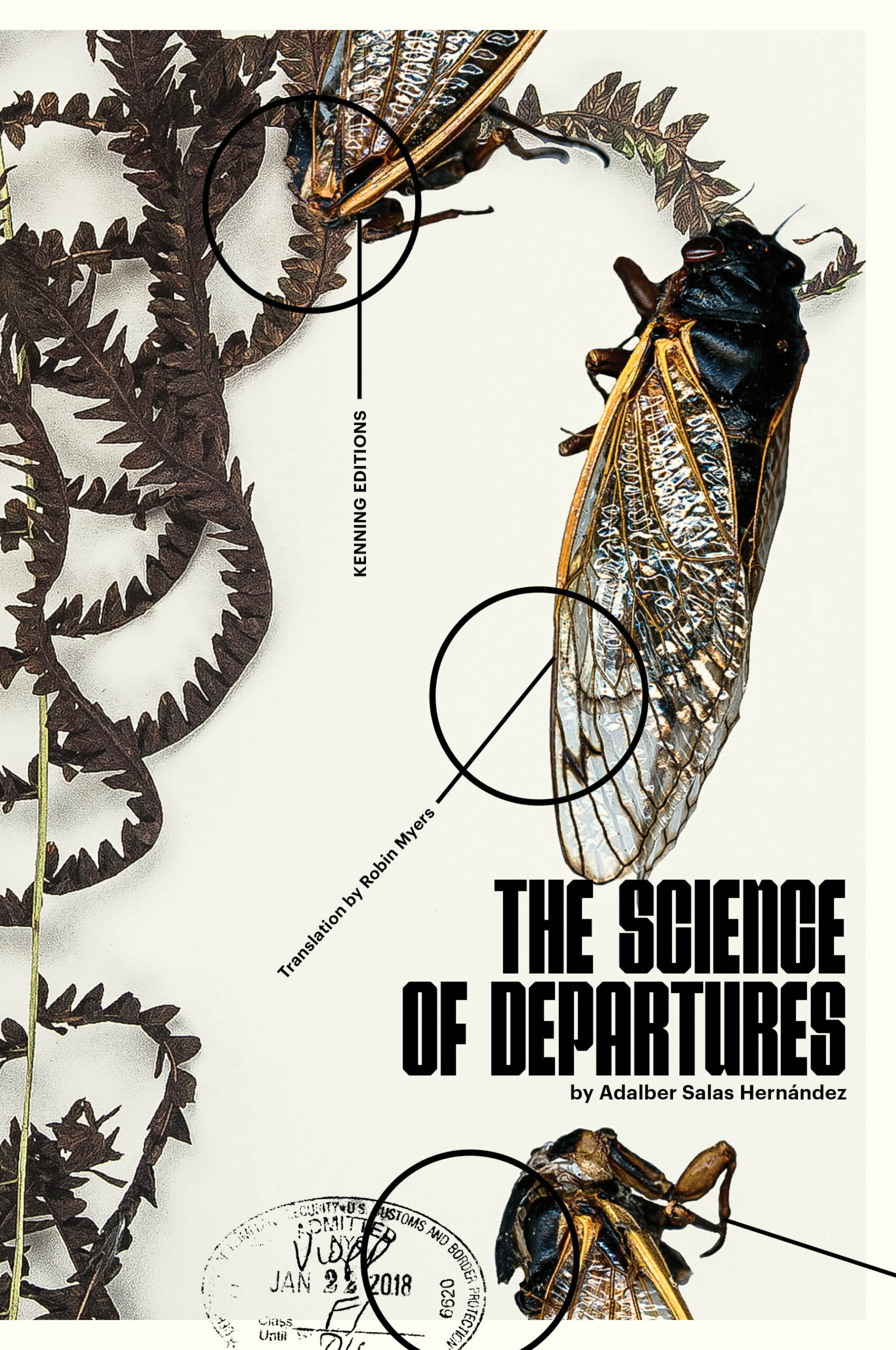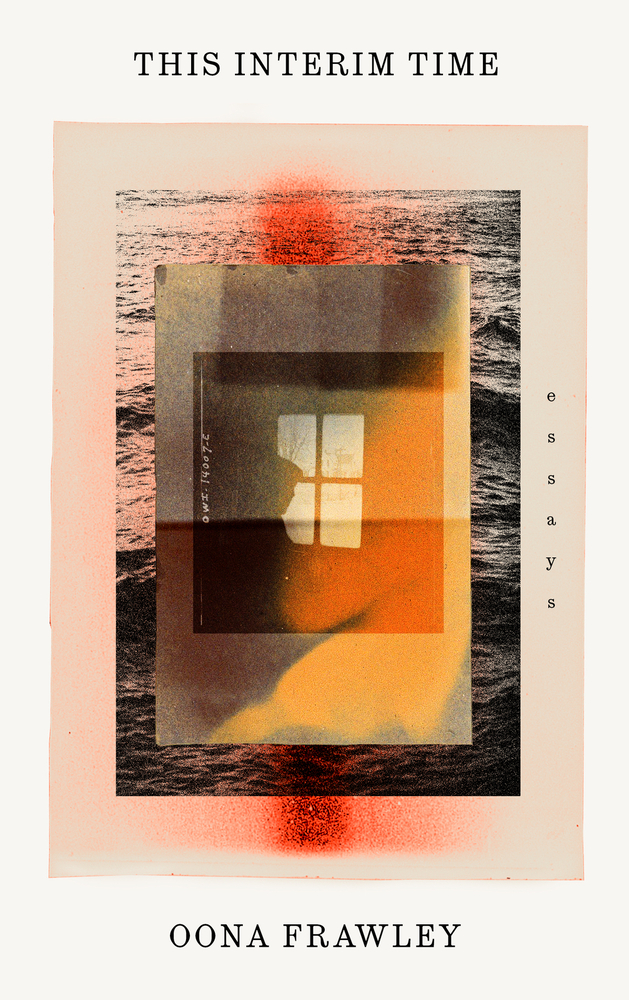Curated by ELLY HONG
This round of Friday Reads features recommendations from three of our online contributors: Carolyn Oliver, author of “Magic Mile;” Rajosik Mitra, author of “Cockroach;” and Jennifer Shyue, translator of “The Eclipse” and author of “Mother’s Tongue.” Their recommendations include two stunning poetry collections and a graphic novel classic.
Recommendations: Pigeon by Karen Solie, The Sandman by Neil Gaiman, and The Science of Departures by Adalber Salas Hernández, translated by Robin Myers

Karen Solie’s Pigeon; recommended by Carolyn Oliver (TC contributor)
“Erie’s memory is going, invasive species / at its mind from the inside, spreading / like a desert.” It was at this point, more than a dozen page flags and halfway through the book, that I realized I need to track down a copy of Karen Solie’s Pigeon for my own shelves. In the briefest lyrics, stanzaic forms, and even a multi-page ekphrastic prose poem (“Archive” extends from a photograph into the not-visible, into history, memory, and environmental study), Solie’s descriptions are consistently astonishing, her intellect a fearsome blade. “It’s terrible, / what a person can think up, / and want,” she writes (“The March West”).
The poems in Pigeon are often restless, alighting on Canadian landscapes—“the Erie shore on the cheap side / of shoulder season,” “the forest / with its long hallways and concealing furnitures,” “lateral sheets of braided river gravels”—and taking off again at unpredictable intervals, the speaker both included within the built and natural environments she describes, and also, simultaneously, hovering over them, observing factories, lichens, military aircraft, endangered snails and wild horses, the dead-end mall and the mourning mathematician. “My attentions were divided. / Nevertheless, I saw what I saw,” the speaker says in the collection’s eponymous poem.
I wish I could remember who recommended Solie’s poems to me; the title I scribbled on a grocery circular was The Caiplie Caves, her most recent collection, unfortunately not circulating in any of my local library systems (as happens frequently when it comes to Canadian poetry). I’m so grateful that Pigeon was available, grateful to be able to recommend these poems of life, desire, danger, destruction. “Here is consequence, folding its wings / on the fence. Here are your chances” (“Listening to The Revelator”).
Neil Gaiman’s The Sandman; recommended by Rajosik Mitra (TC contributor)
It is widely known that Neil Gaiman writes what most refer to as “stories about stories.” Take, for example, his novel American Gods. It is a retelling of mythology—an archetypical war between “old” and “new” gods—but, at its heart, it espouses the thesis that all of world is a narrative we read and everything we know is a story. Gaiman does not intend to blur the line between reality and stories; instead, he erases it completely.
The Sandman, one of Gaiman’s graphic novels, tells about a hundred different stories, spanning cultures and time. It is evident that Gaiman has been gathering them from around the world. The comic’s protagonist is none other than Morpheus, the king of dreams. Morpheus shares his name with a Greek mythological deity; but according to Gaiman, that is just one story about the king of dreams, who is known by many names across time and throughout different cultures. In The Sandman, Morpheus is one of many personifications of primordial phenomena, known as the Endless.
Out of The Sandman’s many stories, my favorite is one about Baghdad. During Harun al-Rashid’s golden reign, the caliph summons Morpheus to strike a deal with him. He takes the king of dreams around a prospering Baghdad, rich with all the tell-tale past wealth of the East, and offers to sell this kingdom to Morpheus. The kingdom will not last, he believes, but the Endless may have the power to keep it from decay. Morpheus agrees. In the following panels, the colors are almost all gone. We find a war-torn Baghdad and an old man on the street telling this story to a child. And the old man says: that city of Baghdad, gilded and shining, was taken away by the king of dreams. You can still go see it, if you dream about it. And the child goes to sleep by the pavement dreaming of a Baghdad that was. I’ve heard some accuse Gaiman of Orientalism here, but I think the point that he is trying to make is still not lost. And growing up in the East, one would definitely hear these stories, about a time before the colonials came, the time when many gilded cities dotted these lands now torn by strife, despair, and poverty.
The Sandman contains this and a few dozen other stories about stories. It is a volume brimming with tales, perfect for anyone who is interested in fantasy world literature.
Adalber Salas Hernández’s The Science of Departures, translated by Robin Myers; recommended by Jennifer Shyue (TC contributor)
I first came across the work of translator and poet Robin Myers here in The Common. In the years since, I’ve come to love her jewel of a column on poetry translation for Palette Poetry as well as her non-translated poems—one of them, published last fall in The Yale Review, was so astonishing in her reading that I listened to it repeatedly and got a friend hooked, too. She also puts out “Poem Per Diem,” a newsletter that brightens my subway commutes and tea-making workday breaks. The nice thing about knowing you like the work of a particular translator is that you can follow them around to the different authors they visit with—each book they write into English is a recommendation from a trusted source. I’ve been trailing Robin Myers recently via two of her latest poetry collections.
I’ve especially enjoyed The Science of Departures by Adalber Salas Hernández. These are poems that revel in sticky sound. Lines like “What rats / pilfer as we sleep, / crumbs and clots like / brief coagula fermented / in slumber” or “That I / is not an other; that I is nobody, a chain of piled-up / throbs, noise, rust, prosody un-possessed by anyone” made me open my mouth to read and reread aloud. To see the translator’s hand at work is likewise a marvel. “Neat” is born of “nítido,” a choice that may not have been a bilingual dictionary’s first bid but that makes thrilling sense in the dictionary of the tongue. “This cold / like no one’s bread” takes flight from “este frío / como un pan sin dueño,” drawing forth in English a new spool of thought-threads. I am delighted to see how Robin deals with questions I have also confronted when translating poetry, such as “What to do with a line that breaks on an article in the Spanish?” or “How to translate onomatopoeia that makes so much sense as a sound in the Spanish but wouldn’t work if carried letter by letter into my English?”
Adalber Salas Hernández’s themes—which are, to steal from the translator’s note, “our bodies, our stories and histories”; the “chasm of language itself”—are ones I often circle as a reader, and the humor, vividness, and teetering moments of this collection make these poems all the more worth savoring. If that sounds appealing to you, consider putting both these poets on your list—maybe one day you and I will bump into each other as we follow them around.






